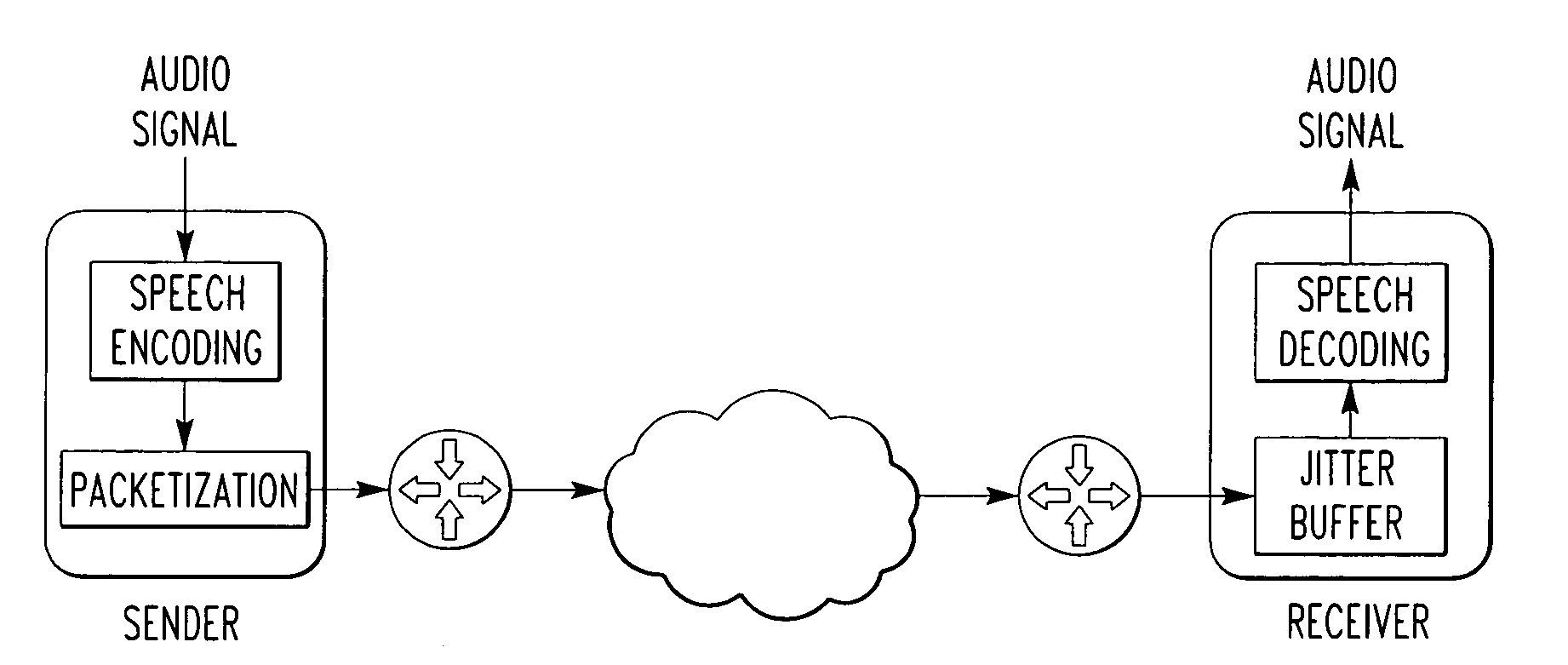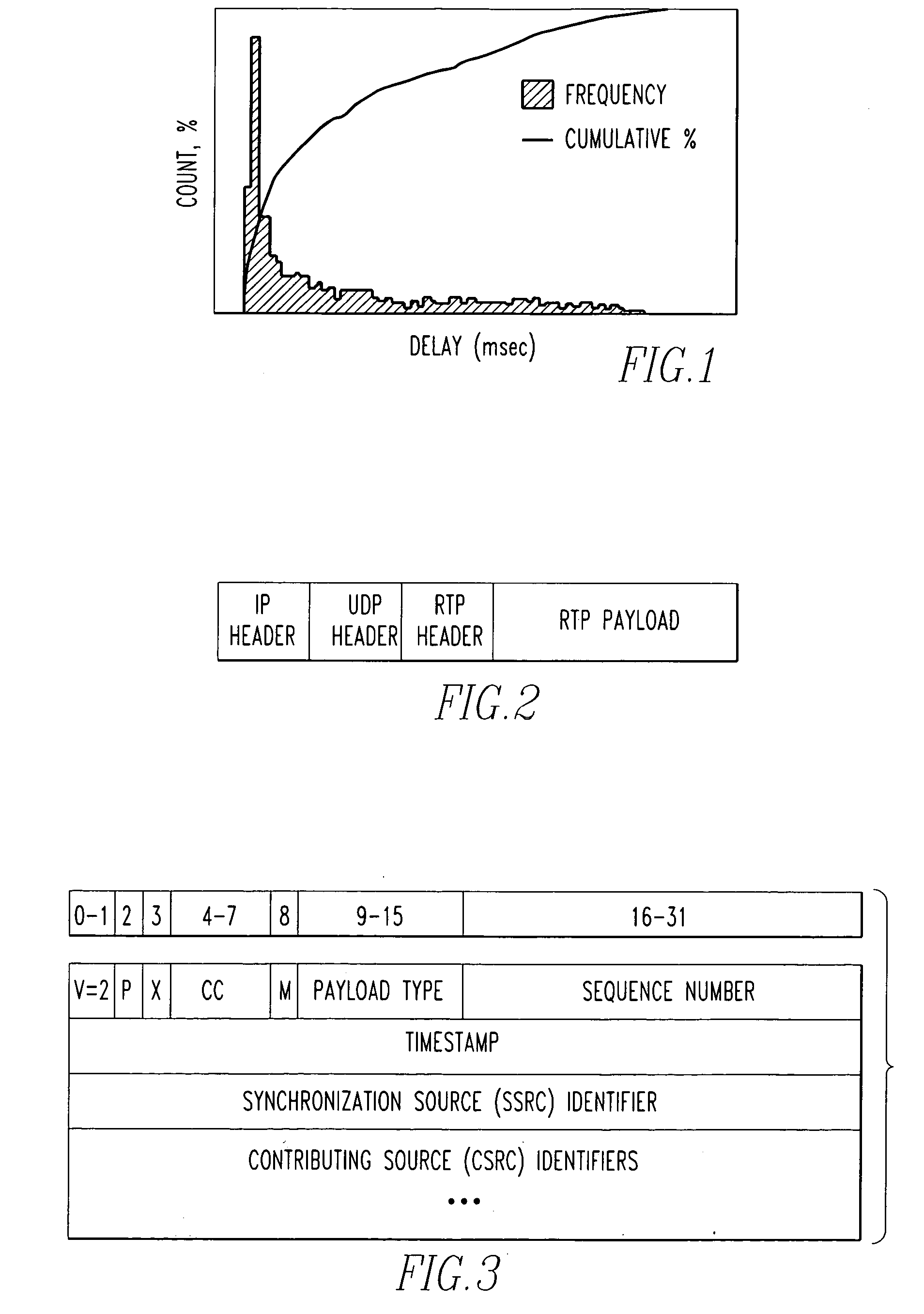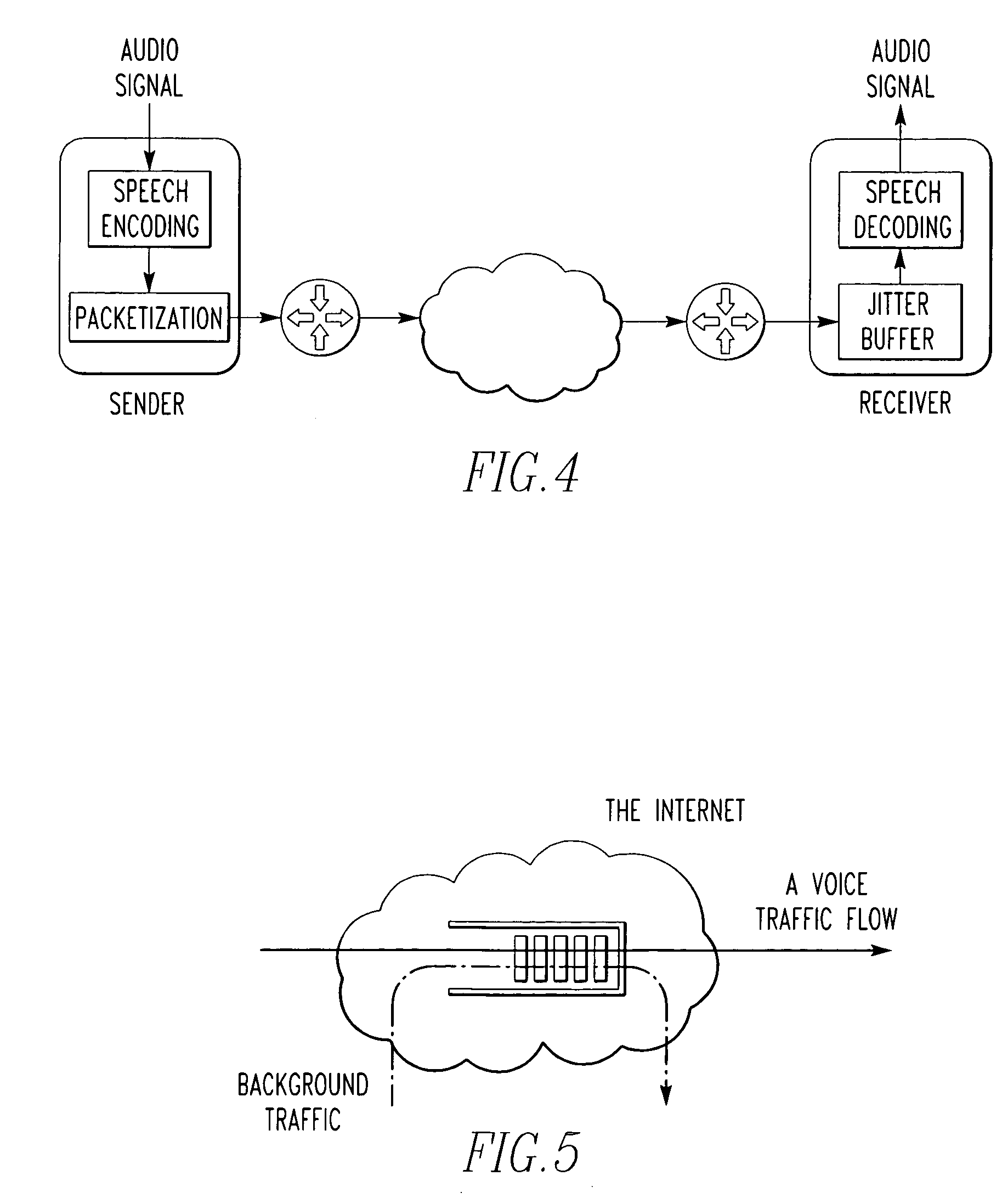Optimizing packetization for minimal end-to-end delay in VoIP networks
- Summary
- Abstract
- Description
- Claims
- Application Information
AI Technical Summary
Benefits of technology
Problems solved by technology
Method used
Image
Examples
example 1
[0114] In accordance with the model, as disclosed above, the trade-off between packetization delay and end-to-end delay is studied by an experiment. The advantage of an experiment is that it is conducted in a realistic environment and more details of its results can be investigated. However, an experiment in a totally real environment has several limitations and problems like controlled factors, reproducibility, and measurement. In the experiment, an intermediate solution is applied in which network emulations are interconnected with real equipment. This allows more control over interesting factors. In addition, while the desired measurement is unidirectional packet delay over a wide area network, one major problem for this kind of measurement is its precision. Because transmitting and receiving devices are in remote locations, it is really difficult, or extremely expensive, that measurement equipments can get clock synchronized between two distant probing points. The experiment tak...
example 2
[0141] The disclosed optimization may be implemented initially, at call set-up, and / or in real-time periodically during the call, since changing network load shifts the optimal packetization value.
example 3
[0142] The minimum value of packetization (that yields the least end-to-end delay) changes with network load. Accordingly, it is advantageous to adjust the packetization value.
PUM
 Login to View More
Login to View More Abstract
Description
Claims
Application Information
 Login to View More
Login to View More - R&D
- Intellectual Property
- Life Sciences
- Materials
- Tech Scout
- Unparalleled Data Quality
- Higher Quality Content
- 60% Fewer Hallucinations
Browse by: Latest US Patents, China's latest patents, Technical Efficacy Thesaurus, Application Domain, Technology Topic, Popular Technical Reports.
© 2025 PatSnap. All rights reserved.Legal|Privacy policy|Modern Slavery Act Transparency Statement|Sitemap|About US| Contact US: help@patsnap.com



